pain management
1. Assess Pain
- Using functional status as a guide
- 30% improvement as function
Types of pain:
- acute vs chronic
- malignant vs non-malignant pain
- Somatic
- tissue damage, muscle, bone
- aching, deep, dull, sharp, stabbing
- localized
- Visceral
- gallbladder, intestines, liver
- crampy, pressure, bloating, nausea, vomiting, sweating
- referred
- Neuropathic
- cause: somatic/visceral coexisting, injury of nerves
- electric, shooting, radiating, burning
- radicular, stocking-glove
- Opioid Risk tool: highest risk factors for substance abuse
2. Match treatment to pain
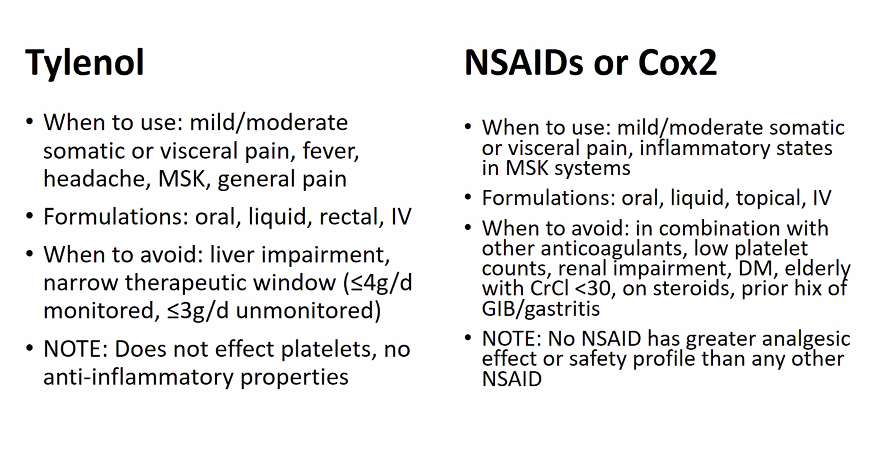
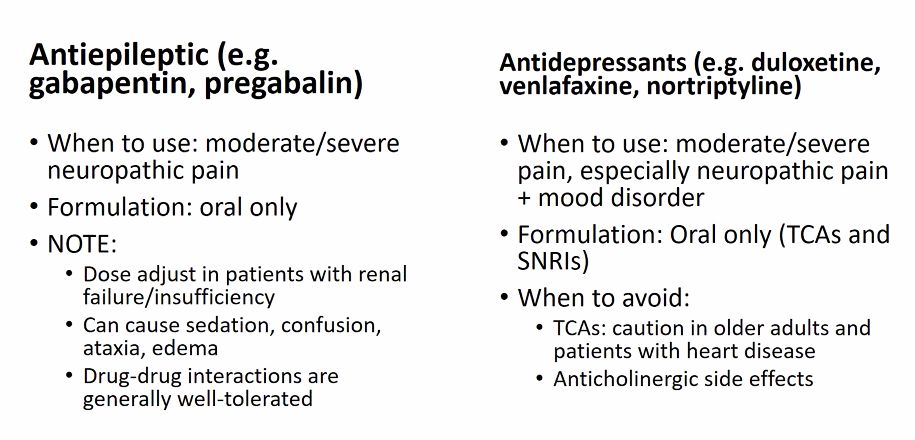 Naproxen: 500mg PO BID, unless AA, can increase BP
Tylenol: 1g TID scheduled
Naproxen: 500mg PO BID, unless AA, can increase BP
Tylenol: 1g TID scheduled
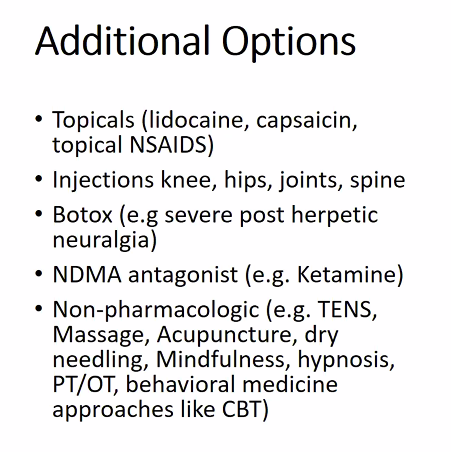
Opioids
- PEG scale use for opioids
- chronic nonmalignant: no more than 50 OME/day (oral mili equavalents)
Side Effects
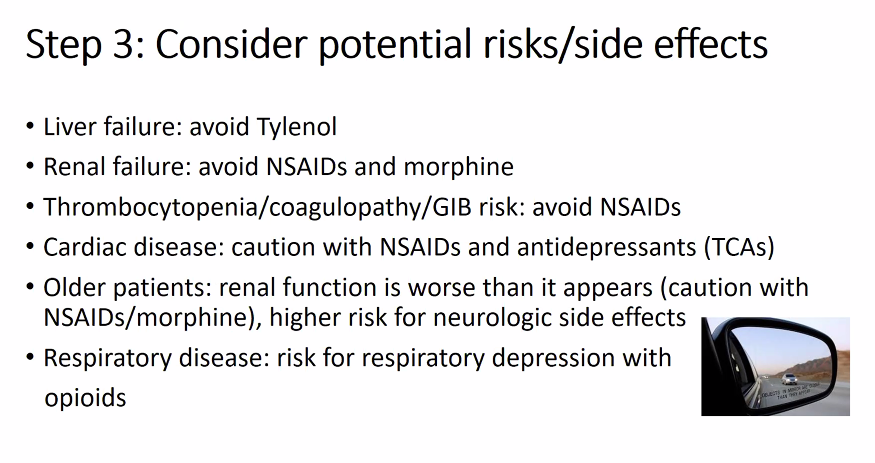
Additional treatment:
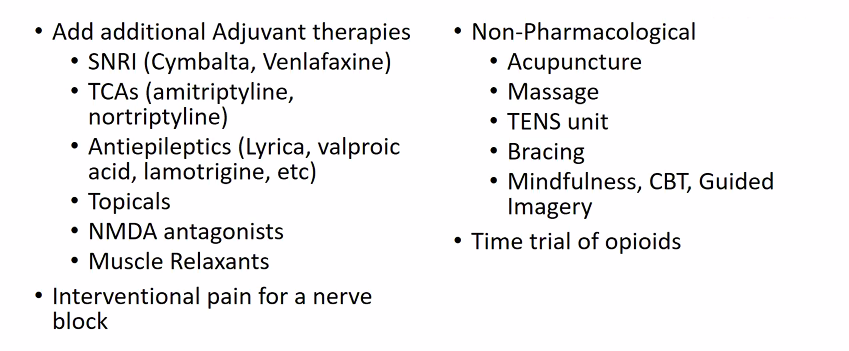
Muscle relaxant: use occasionally
Before starting Opioids
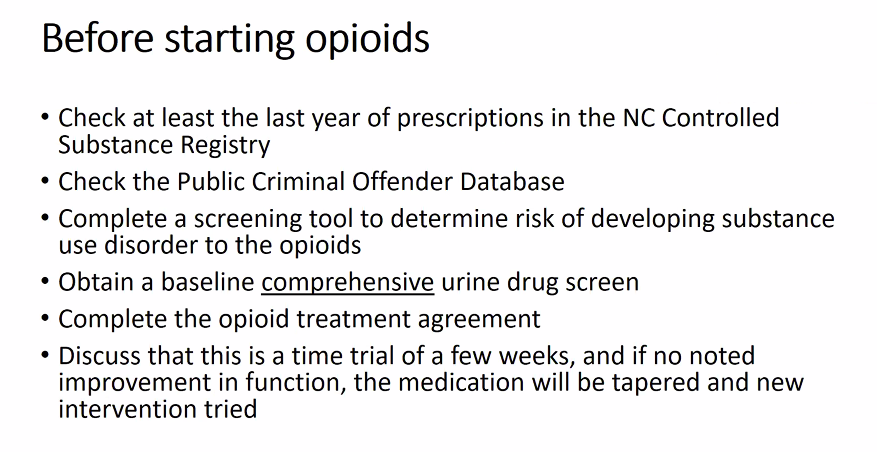
- Do not use opiods and benzos. 10x mortality risks